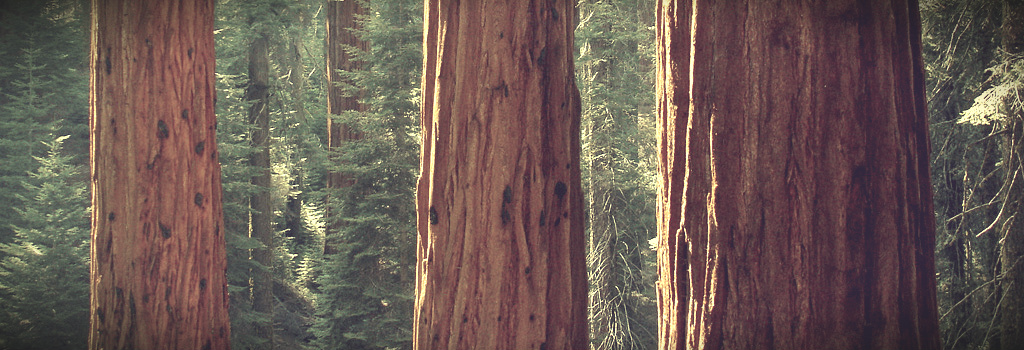 Redwoods are the skyscrapers of treedom, reaching the height of a twenty-five story building, with trunks that cover the footprint of a tenement house. As iconic on the American landscape today as the Empire State Building. Redwoods once grew all throughout the northern hemisphere. Now, the last giant sequoias live on land just four times the size of Manhattan. The trees grow large through centuries of quick growth, sustained with thousands of gallons of water each day from snows melting high in the Sierras. The dense bark holds a great volume of water, which also protects the trees from fires.
Redwoods are the skyscrapers of treedom, reaching the height of a twenty-five story building, with trunks that cover the footprint of a tenement house. As iconic on the American landscape today as the Empire State Building. Redwoods once grew all throughout the northern hemisphere. Now, the last giant sequoias live on land just four times the size of Manhattan. The trees grow large through centuries of quick growth, sustained with thousands of gallons of water each day from snows melting high in the Sierras. The dense bark holds a great volume of water, which also protects the trees from fires.
Redwoods are named for their reddish-brown bark and heartwood, Chemicals in the trees fortify it with a remarkable resistance to disease and insects. They are in the family of conifers – along with the devalued Spruce and Hemlock – pre-historic trees that existed when dinosaurs roamed the Earth, when climate was warmer. Ice ages reduced remaining redwood species to just three small groups.
John Muir, the great naturalist said “There is something wonderfully attractive in this king tree, even when beheld from afar, that draws us to it with indescribable enthusiasm; its superior height and massive smoothly rounded outlines proclaiming its character in any company; and when one of the oldest attains full stature on some commanding ridge it seems the very god of the woods.” In New York City, Redwood is the choice of high budget coops for rooftop watertanks, as apt a use for the towering Sequoia as one can find.


